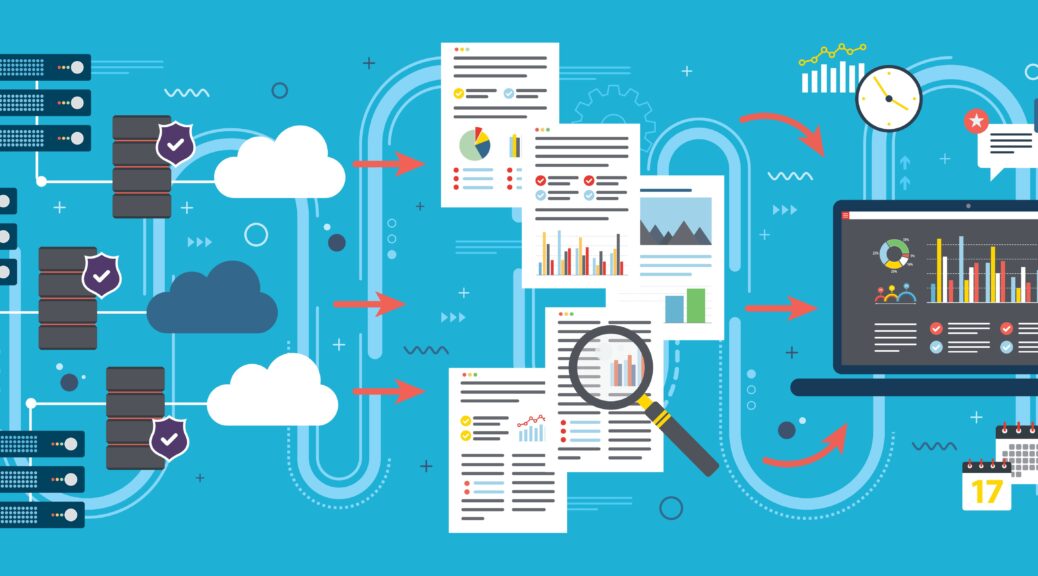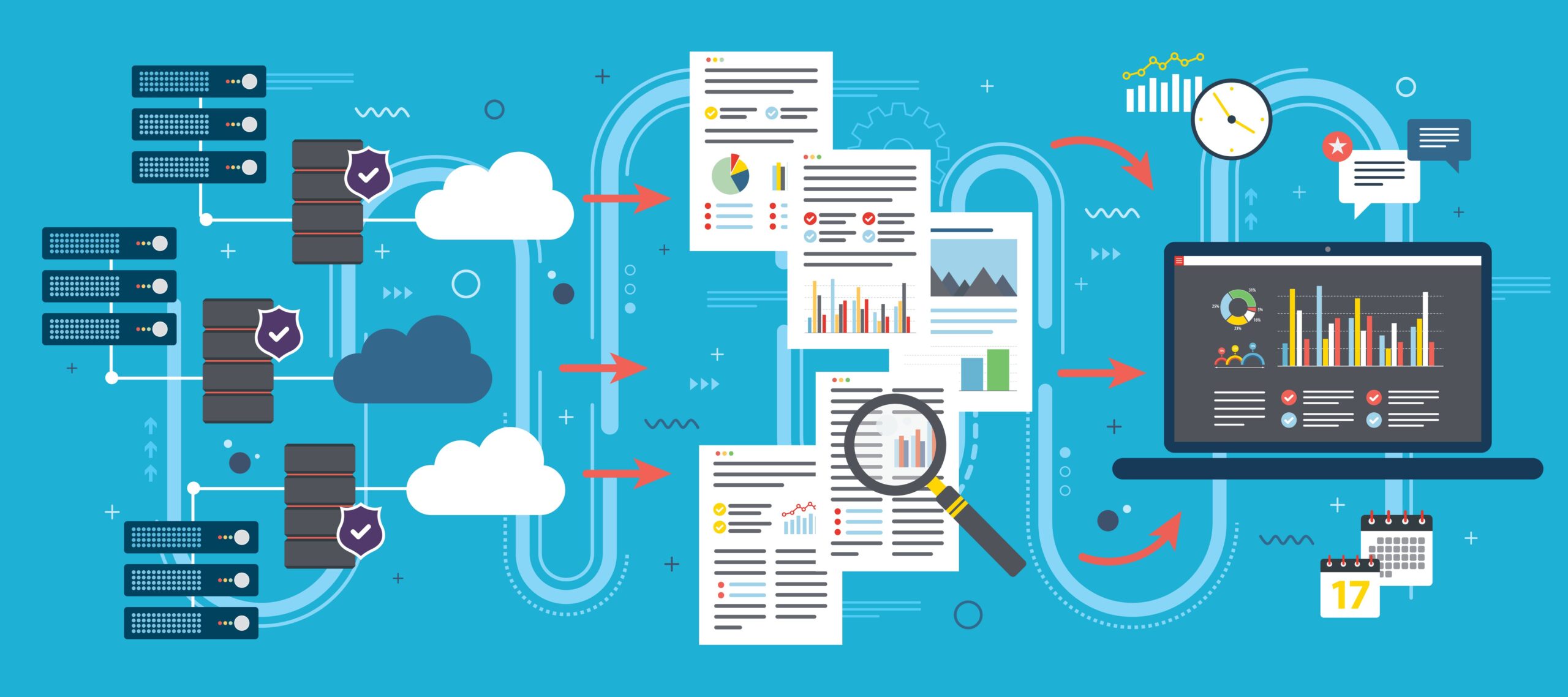
Azure Synapse Analytics – Bringing Together Data Integration, Enterprise Data Warehousing and Big Data

Azure Synapse Analytics is a powerful analytics service that brings together data integration, record time to insights, enterprise data warehousing, and big data analytics bundled into one service.
At its core, Microsoft Azure Synapse helps bring together the best SQL technologies in enterprise data warehousing, pipelines for data integration, spark technologies used for big data, and ETL/ELT. It has a web-based Studio that offers a single place for monitoring, coding, management, and security.
Seamlessly combining Machine Learning, data engineering, and BI capabilities, Azure Synapse ensures to give a robust experience without creating silos in tools and processes. It offers a single service for all workloads when managing and serving data for immediate data prediction and business intelligence needs.
In this blog, we will discuss Azure Synapse, including its architecture, features, security highlights, and more.
Key Features Of Azure Synapse Analytics
As a scalable, cloud-based data warehousing solution from Microsoft, Azure Synapse offers various features. Some of these are –
- Ingest and Query all types of data
Synapse ingests various data types, including relational (data warehouse) and non-relational (data lake) data, and lets users explore this data with SQL. Therefore, all the structured and unstructured data (CRM, Graph, Image, LOB, and Social, IoT, and more) is brought together by Synapse under the same platform for easy access and analysis.
- Leverages massively parallel processing (MPP)
Synapse uses an MPP database or massively parallel processing technology, which allows managing analytical workloads and aggregating/efficiently processing huge volumes of data. Apart from storing each column as an object, MPP databases also distribute data across various nodes that operate parallel to process different portions of queries and helps to facilitate complex, analytical processes.
- Scripting language compatibility
Microsoft Azure Synapse is compatible with many programming languages such as Python, Scala, Java, Spark SQL, .Net, R, SQL, and T-SQL. This compatibility with a wide range of languages makes Synapse suitable for various analytics tasks and data engineering profiles.
- Cloud data warehousing, ML analytics, and Business Intelligence
Because of its deep integrations with a wide range of Microsoft Azure technologies, Azure Synapse offers features such as dashboarding, cloud data warehousing, and machine learning analytics, all in a single workspace. This allows you to quickly ingest all of your data, transform and query it with SQL, visualize it with Microsoft Power BI, and analyze the data with advanced machine learning algorithms.
- Quick and easy integrations with Microsoft technology
Azure Synapse facilitates seamless integration with Microsoft and other Azure solutions such as Azure Blob Storage, Azure Data Lake, and more.
- Analytical processing (HTAP) implementation
Azure Synapse Analytics uses HTAP implementation technology to achieve real-time data integrations with various Azure databases that help you build your operational database infrastructure. This results in real-time machine learning and business intelligence insights drawn from live, operational data.
Azure Synapse Architecture
Azure Synapse architecture primarily consists of four key components-
Synapse SQL
Synapse SQL is essentially the ability to do T-SQL-based analytics in the dedicated Azure Synapse workspace. It mainly consists of two consumption models-
-
- Serverless SQL pool – Used primarily for serverless models.
- Dedicated SQL pool – Mainly used for dedicated models, and a Synapse workspace can have various pools.
Synapse Pipelines
Synapse pipelines for hybrid data integration have the following features:
- Data Integration and data flow
- Activity
- Pipeline
- Integration dataset
Apache Spark for Azure Synapse
These serverless Apache Spark pools are used in the Synapse workspace to use Spark analytics and consist of the below components-
-
- Apache Spark for Synapse
- Notebook
- Apache Spark pool
- Spark session
- Spark job definition
Synapse Studio
Synapse studio or workspace is an easily securable collaboration boundary for doing cloud-based enterprise analytics in Azure.
It is typically deployed in a specific region and also features an associated file system and ADLS Gen2 account for temporary data storage.
Deep Insights Across Data Types And a Unified Analytics Experience With Synapse
Azure Synapse offers a single and unified way for enterprises to manage their analytics resources, monitor usage, and activity, and enforce robust security. Enterprises can do this by.
- Assigning users to Role to simplify accessing of resources
- Offering a single dashboard to monitor resources, usage, and users across SQL and Spark
- Fine-graining access control on data and code
When to Consider Microsoft Azure Synapse
Typically, Azure Synapse Analytics can be considered in the below instances-
- Managing massive data sets and complex queries
Since Synapse uses an MPP architecture, it is among the best option for managing massive datasets while running complicated data analytics operations.
- For data pipeline orchestration
Synapse allows the orchestration of data pipelines to separate historical time operational databases easily.
- Manage need for a managed service
Instead of an on-site data warehouse that has to be maintained externally, Synapse can serve as a powerful managed cloud-based data warehouse. The
Data Warehouse Migration with Synapse Pathway
Originally announced during Microsoft Ignite, Azure Synapse Pathway accelerates the migration of the scripts (functions, views, tables, procedures, etc.) from other analytical store providers to Azure Synapse Analytics.
Migration to Azure Synapse from various other providers such as Microsoft SQL Server, IBM Netezza, Amazon Redshift, Google BigQuery, Snowflake, and Teradata also becomes convenient with Synapse Pathway.
You just need to send the scripts that need to be translated to Azure Synapse Analytics, and Azure Synapse Pathway seamlessly outputs the converted scripts.
Reasons you should consider Azure Synapse Pathways
Among the key reasons why you should consider Azure Synpase Pathways include-
- The key focus of the Azure Synapse pathway is analytical data stores
- Allows you to save hundreds of hours of manual effort on the conversion of your scripts.
- It helps minimize human intervention and offers a clear scope of the effort required for analytical data store migrations to Azure Synapse Analytics.
Security and Privacy with Azure Synapse
Azure Synapse Analytics from Microsoft includes the latest analytics and privacy technology such as dynamic data masking, always-on encryption, real-time data masking, Azure Active Directory authentication, single-sign-on authentication, and automated threat detection.
In addition to this, the platform also allows you to easily control access to all your sensitive data via powerful column-level and row-level security.
To Summarize
Azure Synapse Analytics from Microsoft brings together multiple data storage and analysis tools with powerful security concepts embedded in them. Moreover, a single control plane makes it easier to control security.
However, it is important to consider various aspects of in-depth protection and make key strategic decisions carefully concerning aspects such as
- Enabling data exfiltration protection
- Enabling managed network
- Using customer-managed encryption keys
- Enabling customer-managed provisioned SQL pools.
What is important here is to find the right balance between cost, security measures, maintenance, and risks as some of the key aspects to consider when moving data to the cloud.
Suppose you’re also planning to use Azure Synapse Analytics to service your analytics, data warehousing, and business intelligence needs. In that case, you’ll require an efficient solution to quickly and easily move your data from diverse systems into the platform.
This is where TrnDigital can help you.
We empower experienced data engineers and tech-savvy team members to quickly design sophisticated workflows that securely extract, aggregate, mask, and encrypt data from multiple systems as per the compliance standard and then load it into your Azure Synapse Analytics.
